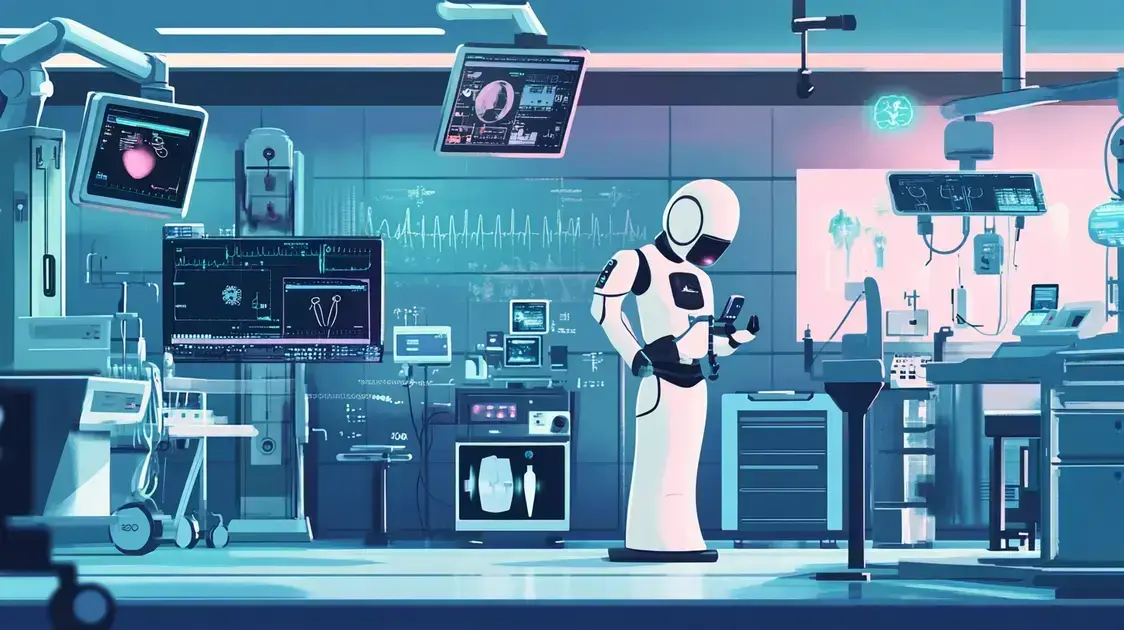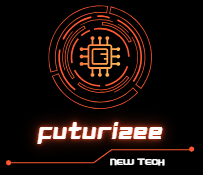Technology Trends for the Future are changing how we live, work, and connect. From AI in schools to IoT in smart cities, these innovations are becoming part of our daily lives and making everything more efficient.
In healthcare, robotics is one of the most promising Technology Trends for the Future. It improves accuracy, reduces errors, and helps doctors provide better care, showing how tech can solve real-world problems.
To stay ahead, it’s important to understand these Technology Trends for the Future. Keep reading to discover how they could impact your life and open new opportunities across industries.
Emerging Technologies to Watch
Technology Trends for the Future are transforming industries with smarter and more secure systems. AI improves decision-making and personalisation, while blockchain adds transparency across sectors. Quantum computing is still evolving but holds massive potential for research and data analysis.
AR, VR, and 5G are also reshaping how we connect, learn, and work. These Technology Trends for the Future enhance real-time experiences and support the rise of IoT and smart environments. Biometric tech is becoming essential for secure access and identity verification.
Edge computing and renewable energy round out the list of major Technology Trends for the Future. These innovations promote speed, sustainability, and efficiency. Keep reading to discover how they’re setting the stage for tomorrow’s breakthroughs.
Future of Work: Remote and Hybrid

Technology Trends for the Future are reshaping the workplace through remote and hybrid models. These approaches offer flexibility, reduced costs, and better work-life balance. With digital tools enhancing productivity, businesses are rethinking how and where work gets done.
The rise of hybrid work models reflects how Technology Trends for the Future are blending physical and virtual environments. Employees now benefit from both in-person collaboration and remote autonomy. Offices are evolving into flexible spaces that support teamwork and innovation.
Challenges like communication gaps and isolation require new strategies. Technology Trends for the Future provide solutions—such as AI-driven platforms, virtual wellness programs, and cloud-based tools—to support employee engagement and a strong, inclusive company culture.
Sustainable Tech Innovations
Technology Trends for the Future are reshaping how we tackle climate and resource challenges. Innovations in solar, wind, and hydro energy, along with better battery storage, are making clean energy more accessible and reliable.
In agriculture, Technology Trends for the Future help reduce waste and boost efficiency. Tools like smart sensors, vertical farming, and eco-packaging support sustainable food production and responsible use of resources.
Technology Trends for the Future also support water conservation and smarter energy use. With smart grids and advanced irrigation, we’re moving toward a greener, more resilient world. Keep reading to explore these exciting changes.
Building Automation Systems
In urban development, sustainable tech innovations are reshaping buildings. Smart building systems control lighting, heating, and cooling efficiently, reducing energy consumption and improving indoor air quality.
Carbon Capture and Utilisation
Innovative technologies for carbon capture and utilisation are making it possible to reduce greenhouse gases. These systems capture carbon emissions from industries and convert them into usable products, contributing to a more circular economy.
Cybersecurity Trends Ahead
Technology Trends for the Future include major advancements in cybersecurity as digital threats become more complex. Companies are adopting proactive defense strategies, using artificial intelligence to detect and stop threats in real-time. This evolution reflects a shift from traditional security measures to smarter, adaptive systems.
One of the most impactful Technology Trends for the Future is the rise of zero-trust security models. These systems verify every user and device before granting access, minimizing risks and protecting sensitive data. As remote work and cloud services expand, this trend becomes even more essential for global organizations.
Staying updated on cybersecurity developments is key to navigating Technology Trends for the Future. From biometric authentication to quantum-safe encryption, the digital landscape is evolving fast. Keep reading to explore how these changes are shaping a safer and more resilient online world.
Advancements in Healthcare Technology

The advancements in healthcare technology are transforming how medical professionals deliver care and how patients manage their health. With the integration of new technologies, healthcare is becoming more efficient and patient-centred.
Telemedicine Growth
Telemedicine has seen rapid growth, allowing patients to consult healthcare providers remotely. This convenient approach breaks down geographical barriers and makes healthcare accessible to those in remote areas, promoting better health outcomes.
Wearable Health Devices
Wearable technology, such as fitness trackers and smartwatches, empowers individuals to monitor their health in real-time. These devices track vital signs, physical activity, and sleep patterns, providing valuable data that can improve health and wellness.
Artificial Intelligence in Diagnostics
Artificial Intelligence (AI) is revolutionising diagnostics, providing healthcare professionals with tools to interpret medical data quickly and accurately. AI algorithms can analyse imaging scans or lab results and assist in identifying diseases earlier, leading to timely treatment.
Personalised Medicine
Advancements in genomics and biotechnology are paving the way for personalised medicine. By analysing a patient’s genetic profile, healthcare providers can identify the best treatment options tailored to an individual’s unique needs, enhancing treatment effectiveness.
Robotics in Surgery
Robotic-assisted surgery is evolving, providing surgeons with enhanced precision and control. These innovative tools reduce recovery times and improve surgical outcomes by minimising the invasiveness of procedures.
Health Information Technology (HIT)
Health Information Technology (HIT) systems streamline patient management by improving record-keeping and data sharing among healthcare providers. Electronic health records (EHRs) enhance documentation, making it easier to track patient histories and coordinate care across different providers.
Remote Patient Monitoring
Remote patient monitoring technologies enable healthcare providers to track patients’ health data from the comfort of their homes. This real-time data collection helps in managing chronic conditions, allowing for timely interventions when necessary.
Blockchain for Health Data Security
With the rise of digital health records, blockchain technology is being explored for securing patient data. By decentralising information storage, blockchain can enhance data security and patient privacy while ensuring that records are tamper-proof.
The Role of IoT in Smart Cities
The role of IoT in smart cities is a fundamental aspect of modern urban planning. The Internet of Things (IoT) connects devices, sensors, and systems, allowing cities to operate more efficiently and enhance residents’ quality of life.
Smart Infrastructure
IoT technology supports the development of smart infrastructure by enabling real-time monitoring of buildings, roads, and bridges. Sensors can track conditions, detect wear and tear, and alert maintenance teams before issues escalate, thus improving safety and efficiency.
Traffic Management
IoT helps optimise traffic management systems through connected traffic lights and smart cameras. These systems can analyse traffic patterns and adjust signals to reduce congestion, making commutes smoother and more efficient for everyone.
Energy Efficiency
Smart grids powered by IoT enable better energy management. By monitoring energy consumption in real-time, cities can make data-driven decisions to reduce energy waste, ensuring efficient use of resources, and lowering costs for residents.
Waste Management
With IoT-enabled waste bins that monitor fill levels, cities can optimise waste collection routes and schedules. This innovation reduces operational costs and minimise emissions associated with waste collection trucks, resulting in cleaner urban environments.
Public Safety
IoT devices enhance public safety through smart surveillance systems and emergency response tools. Sensors can detect issues like smoke or unusual activity, allowing for quick responses from emergency services and improving overall safety for city residents.
Greener Urban Spaces
IoT contributes to creating greener urban spaces by monitoring environmental factors such as air quality, noise levels, and weather conditions. This data helps in making informed decisions about urban planning and maintaining healthy living conditions for residents.
Healthcare Services
Smart cities leverage IoT for healthcare services, enabling remote patient monitoring and telehealth solutions. This technology ensures that healthcare services are accessible and can provide timely interventions when needed.
Enhanced Citizen Engagement
IoT encourages citizen engagement through smart applications that provide real-time information on city services, events, and emergencies. By connecting residents with local government initiatives, cities can foster a greater sense of community and participation.
Trends in Education Technology
The trends in education technology are evolving rapidly, impacting how students learn and teachers educate. Integrating technology into the classroom creates engaging and personalised learning experiences.
Blended Learning
Blended learning combines traditional classroom methods with online learning. This approach allows students to learn at their own pace while still receiving direct support from teachers, making education more flexible and accessible.
Artificial Intelligence in Learning
Artificial Intelligence (AI) is becoming a key player in education technology. AI tools can analyse student performance and recommend personalised learning resources that cater to individual needs, enhancing the learning experience.
Gamification of Learning
Gamification incorporates game-like elements into educational settings to motivate students. By turning learning into an engaging game, students become more involved and enthusiastic about their education.
Virtual and Augmented Reality
Virtual Reality (VR) and Augmented Reality (AR) are transforming how students interact with content. These technologies provide immersive experiences that enhance understanding and make complex concepts easier to grasp.
Collaboration Tools
With the rise of remote learning, collaboration tools have become essential. Platforms like Google Workspace and Microsoft Teams allow students to work together, share resources, and communicate effectively, regardless of their physical location.
Data-Driven Insights
Education technology provides educators with data-driven insights into student performance. Analysing this data helps teachers identify areas for improvement and tailor their teaching strategies to meet the needs of their students.
Online Assessments and Feedback
Online assessments have streamlined the evaluation process. Educators can quickly assess student understanding through quizzes and provide instant feedback, leading to a more efficient learning cycle.
Increased Focus on Digital Literacy
As technology continues to evolve, so does the need for digital literacy. Schools are recognising the importance of teaching students not only how to use technology but also how to navigate digital challenges and maintain safe online practices.
Embracing Technology Trends for a Brighter Future
The rapid advancements in technology are reshaping our world, impacting various sectors, including education, healthcare, urban planning, and business operations. By adopting these innovative solutions, we can enhance efficiencies, improve user experiences, and tackle pressing global challenges.
From AI-driven personalised learning paths in education to sustainable tech innovations that promote eco-friendly practices, the opportunities are immense. Embracing the Internet of Things (IoT) in smart cities enhances urban living, while advancements in cybersecurity ensure the safety of our digital landscapes.
As we look ahead, it is crucial for individuals, businesses, and governments to stay informed about these trends and proactively adapt. By doing so, we can harness the power of technology to drive growth, foster sustainability, and build a better future for all.
Check out our article on AI Automation to discover how artificial intelligence is streamlining processes and boosting efficiency across industries.
